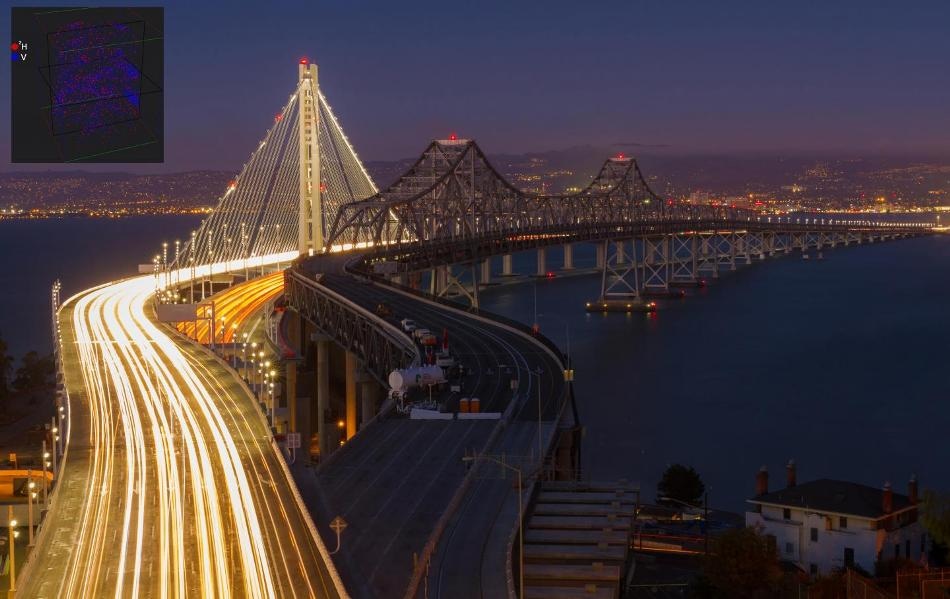Mar 17 2017
 Eastern span of the San Francisco-Oakland Bay Bridge. The old and the new bridge, as seen at night from Yerba Buena Island to Oakland (mid-September 2013). The inset in the top left hand corner shows V Vanadium and 2H, Deuterium a hydrogen isotope (1 proton plus 1 neutron and 1 electron) as a Hydrogen substitute. Credit: Photo credit Frank Schulenburg.
Eastern span of the San Francisco-Oakland Bay Bridge. The old and the new bridge, as seen at night from Yerba Buena Island to Oakland (mid-September 2013). The inset in the top left hand corner shows V Vanadium and 2H, Deuterium a hydrogen isotope (1 proton plus 1 neutron and 1 electron) as a Hydrogen substitute. Credit: Photo credit Frank Schulenburg.
A global research project involving a scientist from University of Queensland has helped to bring next-generation steel and metal alloys a step closer to reality.
This project will be able to overcome the problem of hydrogen alloy embrittlement that has resulted in catastrophic failures in significant building and engineering projects.
UQ Centre for Microscopy and Microanalysis Director Professor Roger Wepf stated that the problem had been recognized for approximately 140 years.
The current generation of these metals can suffer hydrogen embrittlement, where they become brittle and fracture due to the accidental introduction of hydrogen during manufacture and processing. A major example of alloy embrittlement occurred in 2013, when bolts in the eastern span of the San Francisco-Oakland bridge failed tests during construction.
Roger Wepf, Professor, University of Queensland
Professor Wepf stated that hydrogen was very volatile and rapidly diffused.
“Our research collaboration has, for the first time, localized and visualized hydrogen in steels and alloys,” he said.
“This is essential for the development of new alloys with greater endurance.”
“We have shown that it’s possible to localise hydrogen at atomic resolution – at the scale of a single atom – or at a nanometre (less than one-billionth of a metre) scale by combining different technologies in a closed and protected workflow.
“These include state-of-the-art cryo electron microscopy freezing techniques, low-temperature sample preparation in a cryo focused ion beam microscope, and inert cryo-transfer.”
Published in Science, the research involved scientists from the Oxford and Sheffield universities in the UK and ETH Zurich in Switzerland.
On March 25 and 26, two Microscopy and Myscope outreach sessions will be presented by the UQ Centre for Microscopy and Microanalysis at the World Science Festival Brisbane.